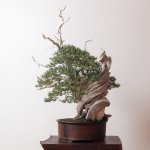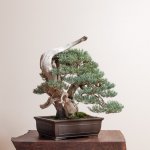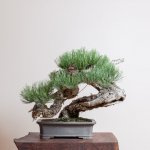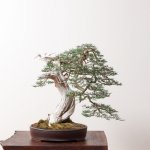Good Morning Sifu [
@Adair M ]
you need to remember our soil mix was evolved back in the early 80's.
3 components - 2 inorganic and 1 organic
5 mm silica based gravel [ non porous ]
5 mm crushed red brick [ porous ]
at that time - sifted aged cow manure - around the 90's aged compost.
Rodale was our source of information and a workbook sold by the Bonsai Farm [ Texas ]
It is a simple blend and can also be just gravel with little organic matter [ in the case of Ficus or Pines ]
We use porous earthenware pots for some trees - Pines for example - pot evaporates water and cools the soil.
Very hard to over water even with constant rain.
Height limit internally 6 inches [ 15 cm ]
These days the pots are 3" deep but broader.
Trunk and root development used ground growing and a colander.
After removal, the tree is left in the colander for around 6 months to restart the fine root growth, before transferring
to an oversized bonsai pot and the next stage of training.
Death of anything is very rare and the mix works.
When I show something - eg - the Fustic drying out - it is to show the problem - then a solution
and also to say we goofed - have no ego problems and hopefully help someone who had the same problem
or might run into it.
We have based most of new work as soil goes, looking for the optimum - The Ball Bearing principle - freely draining
, water retaining and fresh air exchange.
Hence the marbles, 3mm spheres , lecca [ hydroponic fired clay "balls " ] and hand rolled 8 mm porous earthenware spheres.
The idea is the K.I.S.S. principle.
Thus far it works, and we have nothing but fine feeder roots, lush foliage, that can be sculpted into shapes by the take away
technique.
So when I admit, I don't know, I am being honest.
Additionally, if one isn't having problems, what would I need to research ?
Research, yes, but into growing new never used trees/shrubs and ground weeds.
I hope this explains.
Respectfully.
Anthony





